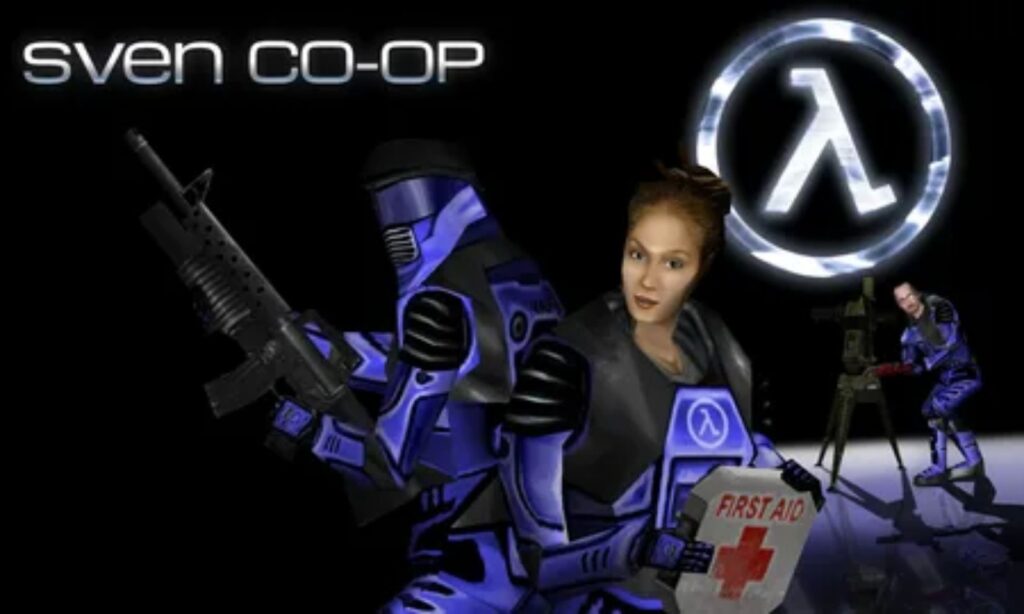Introduction
Ever wondered how a simple graphic can encapsulate the essence of a game? Enter Sven Co-op, the legendary cooperative mod for Half-Life that has been captivating gamers for decades. But what truly sets it apart, beyond the thrilling gameplay, are the distinctive icons and banners that define its visual identity. Let’s dive into the world of Sven Co-op’s graphical artistry and see how these visuals contribute to the game’s enduring appeal.
The Evolution of Sven Co-op Icons
The Early Days
Sven Co-op began its journey as a Half-Life mod in 1999, and with it came a basic set of icons that represented the cooperative gameplay mechanics. Early icons were simple, pixelated images that emphasized functionality over flair. They were designed to fit seamlessly within the Half-Life interface, ensuring players could easily recognize objectives, allies, and enemies.
The Rise of Detail
As the game evolved, so did its icons. With advancements in graphic design software and a growing community of talented artists, Sven Co-op icons became more detailed and vibrant. The transition from simple pixel art to more complex and visually appealing icons marked a significant shift in the game’s aesthetic. These new icons not only provided clearer visual cues but also enhanced the overall gaming experience by immersing players in a richer graphical environment.
Modern-Day Masterpieces
Today, Sven Co-op icons are a blend of nostalgia and modernity. They retain the essence of the original designs while incorporating contemporary graphic design elements. High-resolution icons with intricate details are now the norm, ensuring that players get the best visual experience possible. These icons are not just functional; they’re also a testament to the game’s rich history and the dedication of its community.
The Role of Banners in Sven Co-op
Marketing Marvels
Banners have always played a crucial role in marketing Sven Co-op. From promoting updates and new features to celebrating anniversaries and special events, banners are the game’s visual storytellers. Early banners were straightforward, often featuring key characters and gameplay scenes. However, as the game gained popularity, the banners became more sophisticated, incorporating dynamic elements and eye-catching designs.
Community Creations
One of the unique aspects of Sven Co-op is its vibrant community. Fans and players frequently create their own banners to showcase their love for the game. These community-created banners are often featured on forums, social media, and even within the game itself. This collaborative approach not only strengthens the bond between the developers and the community but also ensures a continuous stream of fresh and innovative visuals.
Celebrating Milestones
Over the years, Sven Co-op has celebrated numerous milestones, and each of these celebrations has been marked with special banners. Whether it’s the release of a major update, the anniversary of the game’s launch, or a community event, these banners are crafted with care and precision. They serve as a visual record of the game’s journey, capturing key moments and the excitement surrounding them.
The Impact of Icons and Banners on Gameplay
Enhancing Immersion
Icons and banners in Sven Co-op do more than just provide visual appeal; they enhance the overall immersion. Clear and well-designed icons help players navigate the game more efficiently, ensuring they can focus on the cooperative gameplay. Banners, on the other hand, set the tone for the game, creating an atmosphere that draws players in and keeps them engaged.
Building a Legacy
The consistent evolution of icons and banners in Sven Co-op is a testament to the game’s enduring legacy. Each new set of visuals builds upon the previous ones, creating a cohesive and recognizable brand. This continuity helps old players feel at home while also attracting new players who appreciate the blend of classic and contemporary design elements.
Conclusion
Sven Co-op’s icons and banners are more than just visual elements; they are integral to the game’s identity and legacy. From the early days of simple pixel art to the modern masterpieces we see today, these graphics have evolved alongside the game, enriching the player experience and fostering a strong community. So, the next time you boot up Sven Co-op, take a moment to appreciate the artistry behind the icons and banners that have become synonymous with this legendary cooperative game.
FAQs
1. What is Sven Co-op? Sven Co-op is a cooperative modification for the classic first-person shooter game Half-Life, allowing players to team up and tackle various missions and challenges together.
2. How have Sven Co-op icons evolved over the years? Sven Co-op icons have evolved from simple, pixelated designs to detailed and vibrant high-resolution graphics, enhancing both functionality and visual appeal.
3. Why are banners important in Sven Co-op? Banners play a crucial role in marketing, celebrating milestones, and fostering community engagement, serving as visual storytellers for the game’s journey.
4. Can players create their own banners for Sven Co-op? Yes, the Sven Co-op community is highly creative, with players frequently designing and sharing their own banners, which are often featured on various platforms.
5. How do icons and banners impact gameplay in Sven Co-op? Well-designed icons improve navigation and gameplay efficiency, while banners enhance the overall atmosphere and immersion, contributing to a richer gaming experience.
